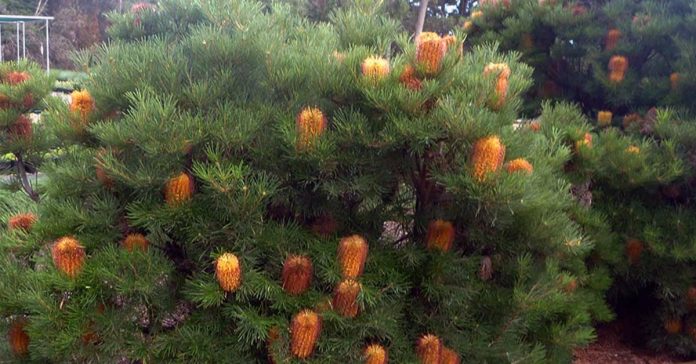Title: A Sparkling Jewel: Unveiling the Secrets of Banksia ‘Twilight Sparkle’
The Banksia ‘Twilight Sparkle,’ a cultivar of the Banksia spinulosa species, is a captivating plant that adds a touch of magic to any garden. This stunning member of the Proteacea family boasts unique features, vibrant hues, and a captivating history.
Origins and Distinctive Features:
The story of Banksia ‘Twilight Sparkle’ begins in the bushlands of Western Australia. This cultivar is a hybrid, resulting from the cross-breeding of two exceptional Banksia spinulosa varieties – ‘Birthday Candles’ and ‘Stardust.’ The result is a plant that embodies the best of both worlds, showcasing a stunning display of vibrant orange and yellow flower spikes, aptly named for their resemblance to birthday candles and stardust.
The foliage of Banksia ‘Twilight Sparkle’ is equally captivating. Its long, serrated leaves are adorned with a silvery-grey sheen, creating a striking contrast against the vibrant blooms. This unique combination of colors and textures makes ‘Twilight Sparkle’ a truly eye-catching addition to any landscape.
Blooming Beauty and Ecological Significance:
The Banksia ‘Twilight Sparkle’ blooms over a prolonged period, typically from late winter to early summer. During this time, the plant produces a spectacular display of bottlebrush-like flower spikes that range in color from vibrant orange to golden yellow. These unique blooms attract a diverse range of native birds and insects, playing a vital role in the local ecosystem.
A Cultivar for Every Garden:
One of the most appealing aspects of Banksia ‘Twilight Sparkle’ is its adaptability. It thrives in a variety of well-drained soils and can tolerate full sun to partial shade conditions. This makes it an excellent choice for gardeners of all levels, requiring minimal maintenance while offering a captivating display of color and texture.



